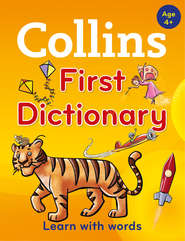По всем вопросам обращайтесь на: info@litportal.ru
(©) 2003-2025.
✖
Easy Learning Spanish Conversation
Автор
Год написания книги
2019
Настройки чтения
Размер шрифта
Высота строк
Поля
SAYING WHAT YOU LIKE, DISLIKE, PREFER (#ulink_9037bed3-8fb9-5c40-9849-35cf4200da79)
When talking about what kind of accommodation you like, remember that the Spanish for I like works rather differently from English. You use me gusta with singular words and me gustan with plural ones.
I like…
And to say what you don’t like, you simply put the word no in front of me gusta or me gustan.
I don’t like…
To say what you prefer, you can use prefiero (I’d prefer).
I’d prefer…
MAKING SUGGESTIONS (#ulink_ab573c21-d4a2-53ad-a857-6614ab1d4dab)
If you’re with Spanish-speaking friends or colleagues when looking for somewhere to stay, you’ll need to be able to suggest things. One way of doing this is to use ¿Qué te parece si…? ¿ or ¿Y si…? (How about…?) followed by a verb in the present tense. For more on the present tense, see here (#litres_trial_promo).
How about…?
Why don’t…?
To make a suggestion about what you could do, use podríamos (we could).
We could…
TALKING ABOUT YOUR PLANS (#ulink_635353f1-3c19-5add-9558-9f4d1e36c1ea)
Deciding on where you’re going to stay is a major part of planning a trip or holiday, so you may well want to talk about those plans in Spanish. Use voy a (I’m going to) or vamos a (we’re going to) and the infinitive to talk about what you’re planning to do. They’re from the verb ir (to go). For more on ir, see here (#litres_trial_promo).
I’m going to…
Another way of talking about your plans is to use tengo pensado (I’m planning to) followed by the infinitive. tengo comes from the verb tener. For more information on tener, see here (#litres_trial_promo).
I’m planning to…
COMPLAINING (#ulink_dc4dac73-5d3b-5e56-8734-a9908495feb4)
Unfortunately the service you get in your accommodation may not always be perfect. A very simple way of complaining is to say what the problem is using hay, meaning there is or there are, and no hay (there isn’t or there aren’t).
There’s…
There isn’t…
In the next examples notice how the verb ser is used to describe things which won’t change, such as the beds being uncomfortable, and estar is used for things which can change, such as the room being dirty. For more on ser and estar, see here (#litres_trial_promo).
is…
¿LO SABÍAS?
Remember that in Spanish to talk about the weather or the temperature inside, you use the verb hacer (to do, to make). For more on hacer, see here (#litres_trial_promo).
LISTEN OUT FOR (#ulink_4cea1dd9-1611-5530-a526-6aeaaf42db55)
Here are some key phrases you are likely to hear when you’re looking for somewhere to stay.
Lifestyle Tips (#ulink_6426461a-c71f-5579-859b-ce3320782b84)
• The most economical hotels and guesthouses in Spain are pensiones and hostales, which offer no-frills accommodation. Unlike British B&Bs, they do not normally include breakfast so you may have to go elsewhere to get some.
• At the other end of the scale are the paradores nacionales de turismo, hotels which are located in places of interest and which are often historic buildings such as castles or monasteries.
• Accommodation in casas rurales has become very popular in Spain. These are country houses and cottages that have been converted for holiday lets or that have been turned into guesthouses.
• If you’re a man, you’re likely to hear receptionists and waiting staff call you caballero (literally gentleman). If you’re a woman, you’ll hear señora (literally lady) used in the same way. If the staff are young, you can call them tú rather than usted, even when they call you usted back.
• If you want to rent a flat to live in in Spain, you’ll probably have to sign a contrato de alquiler or de arrendamiento (lease) and leave a fianza (deposit) of one or two months’ rent with the dueño or propietario (landlord).
Wining and dining (#ulink_ba90ed05-5f17-5e22-89fc-eb5a60e92b7b)
¡Buen provecho! – Enjoy your meal! (#ulink_e8baeed8-b002-5a89-b2cf-41f56d1f5b20)
If you’re going out for a meal in Spain, the phrases in this unit will give you the confidence to talk to the waiter and chat with your Spanish friends in easy, natural Spanish. We’ll also give you some tips on getting advice about what to order, and a few key phrases the waiters are likely to use.
MAKING ARRANGEMENTS (#ulink_b6548d06-e4cf-51e6-aed8-3e48e7ed37e2)
If you’re going out for a meal with Spanish-speaking friends or colleagues and you want to make arrangements such as where and when to meet, you can use the verb quedar (meaning to meet or to arrange to meet).
Shall we meet…?
What time…?
When making arrangements to eat, you’ll want to check what suits other people. Use ¿No te importa que…? followed by the subjunctive or ¿No te importa si…? followed by the ordinary present to ask Is it ok with you if…? Of course you should only use te with someone you call tú. Change it to le if you call them usted. For more information on the subjunctive, see here (#litres_trial_promo).
Would it be ok if…?
To say what would suit you better, you can use me vendría mejor (it would suit me better). vendría comes from venir (to come).
It would suit me better…
ASKING FOR INFORMATION (#ulink_3ea05e0f-5b90-5002-ba77-a486134abab0)
One of the pieces of information you may need to find out is where things are. Remember that when you ask where something is, estar is the verb you generally use.
Where’s…?
Before you decide where to eat or what to eat, you may want to find out what the restaurant or the food is like. Don’t forget that Spanish has two verbs for to be: ser and estar. For more on these verbs, see here (#litres_trial_promo).
Is…?











